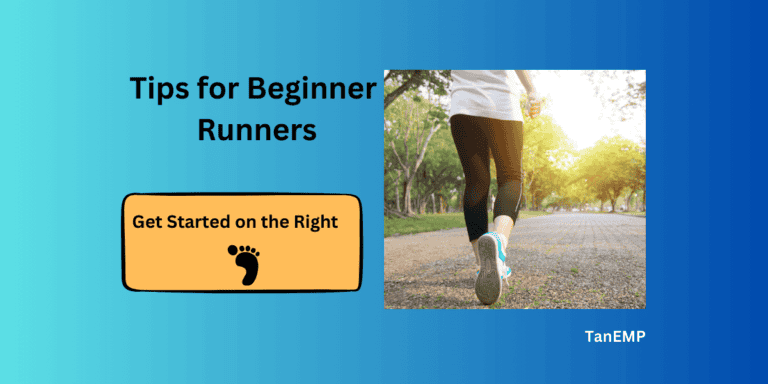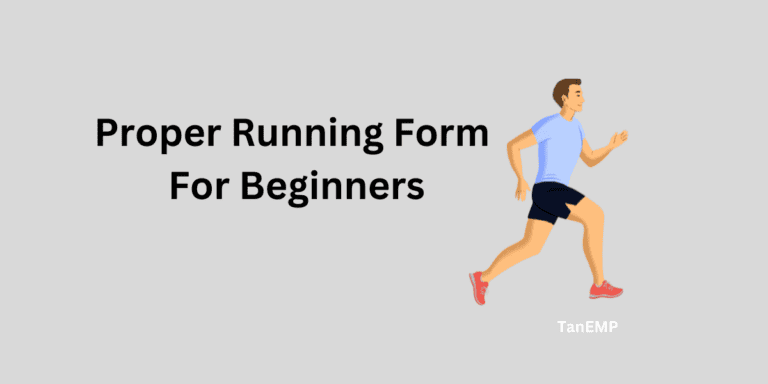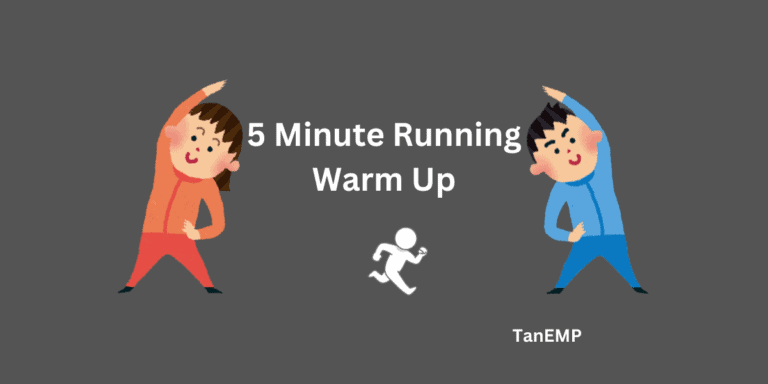How to Start Running: A Beginner’s Guide to Hitting the Road in 2025
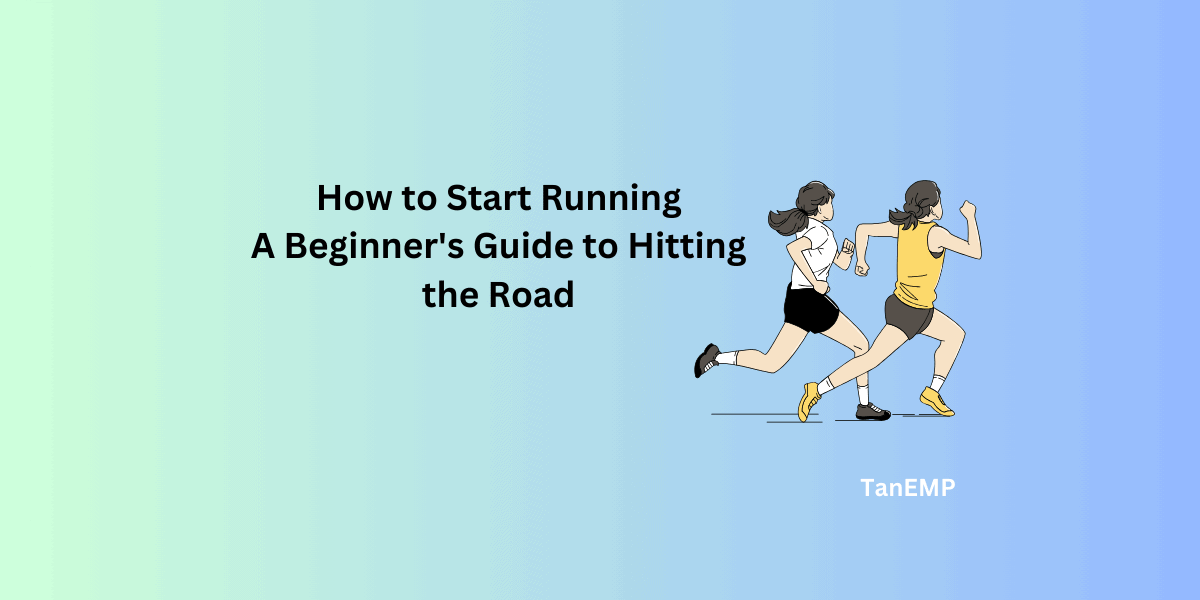
Running for just 5-10 minutes each day can help your heart stay healthy. It can lower your chance of heart problems by almost half!
Running isn’t just about getting in shape. It’s one of the best things you can do for your body.
Whether you like to run in the morning or at night, just start running.
A lot of people feel a bit nervous at first, but these simple guides will help you get started with confidence.
What to Expect? Here’s What You’ll Learn:
- Starting Strong: Discover simple steps to kick off your new running routine confidently, even if you’ve never run before.
- The Gear You Need: Learn which essential gear, like running shoes and clothing, will make your runs more comfortable and enjoyable.
- Mastering the Run-Walk Method: Find out how alternating between running and walking can help you build endurance while keeping running fun and manageable.
- Perfecting Your Running Form: Get tips on proper form to help you run safely and avoid common injuries.
- Staying Safe and Injury-Free: Explore smart ways to prevent injuries with rest days, cross-training, and listening to your body’s needs.
- Fueling Right: Learn about nutrition and stay hydrated to keep you energized for each run and aid in quick recovery.
- Building Your Routine: Discover how to safely add distance and variety to your runs as you progress.
- Staying Motivated: Pick up tips to keep your motivation strong, from setting goals to celebrating your wins and mixing up your running routes.
By the end, you’ll have the confidence and knowledge to start running and keep going.
Ready to hit the road? Let’s dive in!
How to Start Running For A Beginner?
Feeling nervous about running? Don’t worry, I’ve been there!
I know exactly how you feel. I kept putting it off too. For weeks, I’d tell myself “Maybe tomorrow” before I finally tried it.
But here’s the truth, running isn’t as hard as you might think.
Anyone can become a runner (Yes, even you)
Why start running? It can help you:
- Weight loss
- Feel happier
- Get stronger
- Stay healthy
Never run before? That’s okay! We’ll show you how to start slowly and safely.
Taking Your First Steps Out the Front Door
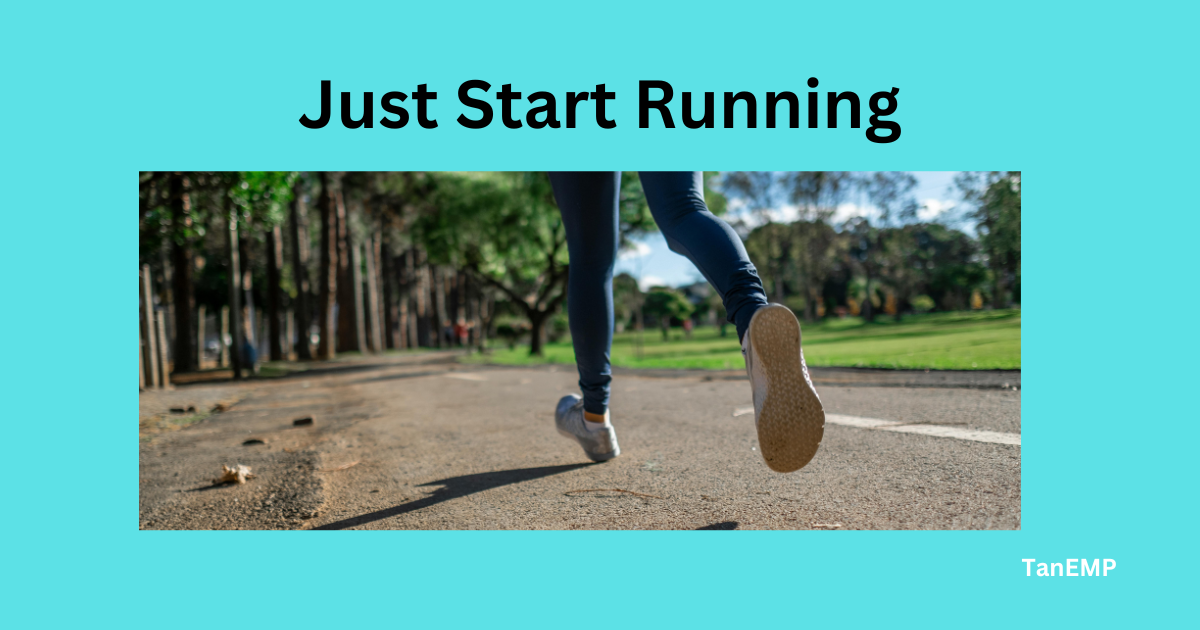
Want to know the hardest part of running? It’s not what you think!
The biggest challenge for many new runners isn’t about how fit you are. It’s about getting started.
Many people find excuses to put it off:
- “I’ll start tomorrow”
- “I’m too tired”
- “Maybe next week”
- “I’m too busy”
- “Too Cold/Hot”
If you had never taken your first steps, how would you learn the joy of running?
Pro tip: Don’t worry about running far or fast. Even just a few minutes a day can make a difference.
Related Post: Running in The Morning Vs Night
Tips for Starting Your New Running Routine
If you’re new to running, start simple. Try not to run every day right away. Instead, aim for 15-minute runs, about 1-3 times weekly.
This schedule helps your body get used to running without overdoing it.
Rest days are just as important as your running days. Taking breaks gives your body time to recharge, so you won’t feel worn out or risk getting hurt.
It’s easy to push yourself, but pacing is key if you want to stick with it.
As running feels easier, you can slowly add a few more minutes to each run.
Tip for new runners: Start slow, focus on short runs, and remember to take rest days. Keep it fun and celebrate each step!
Gearing Up: Essential Equipment for New Runners

Investing in the right gear can make a big difference in your running journey.
Choosing the Right Clothes for Running
When picking running clothes, comfort should come first! Choose soft, breathable fabrics that fit well and let you move freely.
Look for clothes made from moisture-wicking materials. These fabrics pull sweat away from your skin, keeping you dry and comfortable, especially on hot days.
Moisture-wicking clothes also help prevent chafing when your skin rubs against wet fabric. You’ll stay cooler, drier, and ready to run longer with the right clothes.
Choosing the Right Running Shoes

Picking a good pair of running shoes is important. First, think about your foot shape, how you run, and where you’ll be running on roads, trails, or a treadmill.
A specialty running store is the best place to get the right fit. They can check things like your foot shape, arch, and the way you step. Many stores even watch you run to help you find shoes that give the best support and comfort.
The right shoes can prevent pain and help you enjoy your runs more, so it’s worth finding the perfect fit!
Fitness Trackers and Running Apps
Fitness trackers and running apps aren’t a must, but they can be super helpful for new runners.
They help you track things like how far you run, how long you run, and how fast you go. This can give you motivation and help you see how much you’ve improved.
Some apps even let you set goals or follow a plan to keep you on track. But remember, you don’t need all that fancy stuff to get started.
The most important thing is to just start running!
The Run-Walk Method: An Easy Way to Start Running

The run-walk method is a simple way for beginners to start running. By switching between running and walking, you can slowly build your endurance while reducing the risk of injury.
This approach is perfect if you’re new to running or want to improve your stamina without overdoing it.
Here’s how to get started:
- Start with 2-3 sessions per week
Try running for 20-30 minutes a few times a week, allowing rest days in between. Starting slow helps prevent burnout and injuries. - Begin with short running intervals
Start by running for just 1 minute, then walking for 2-3 minutes. Run at a pace that lets you talk without losing your breath. - Increase your running time gradually
As running feels easier, add 30 seconds to 1 minute to your running time while shortening your walking breaks. This helps build stamina without overwhelming you. - Listen to your body
If you feel tired, take longer walking breaks. The goal is to keep moving without straining yourself. - Track your progress
Each week, try adding a little more running time and cutting down on walking. You’ll notice over time that you can run longer and walk less.
Benefits of the Run-Walk Method:
- Helps Prevent Injuries
Alternating running and walking reduces stress on your muscles and joints, which lowers your risk of injury. - Builds Endurance Slowly
This method helps you build stamina without feeling overwhelmed. - Keeps Running Enjoyable
You’ll feel successful and stay motivated, making running feel fun instead of a chore. - Easy to Adjust
You can customize the run-walk intervals to match your fitness level, making it flexible for all beginners.
The run-walk method is about finding a pace that works for you. Keep showing up, take it one step at a time, and enjoy your progress!
Proper Running Form and Technique
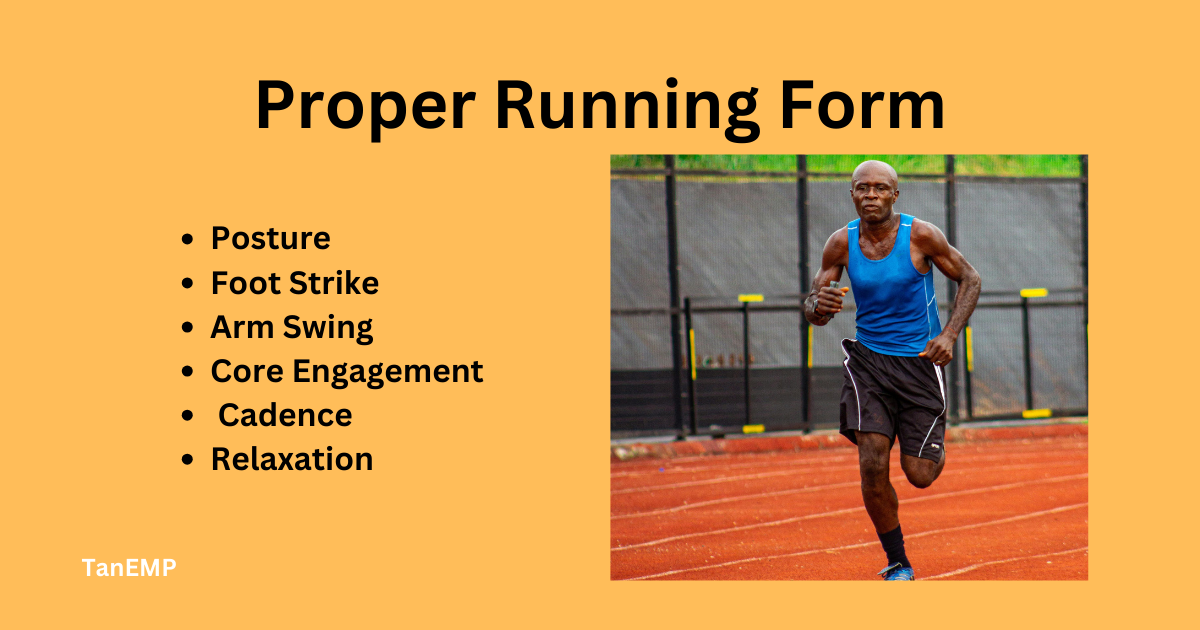
Developing Good Running Form
Learning good running form helps you run better and avoid injuries. Here are some basics to keep in mind:
- Keep an Upright Posture
Stand tall while running. Keep your head up and shoulders relaxed to avoid extra strain. - Let Your Arms Swing Naturally
Let your arms move at your sides without forcing them. This helps keep your balance. - Watch Your Foot Placement
Try to land your feet directly under your body, not too far in front of you. This helps you move forward more smoothly. - Avoid Common Mistakes
Don’t overstride (taking steps that are too long) or hunch forward. These can lead to injuries and make running harder. - Focus on Your Breathing
Practice deep breathing from your belly instead of shallow breaths from your chest. This helps you get more oxygen and feel less tired.
As you get better, you may want to work with a running coach or watch videos for more tips on running techniques.
Don’t Forget to Warm Up and Cool Down!
Warming Up and Cooling Down: Key Steps for New Runners
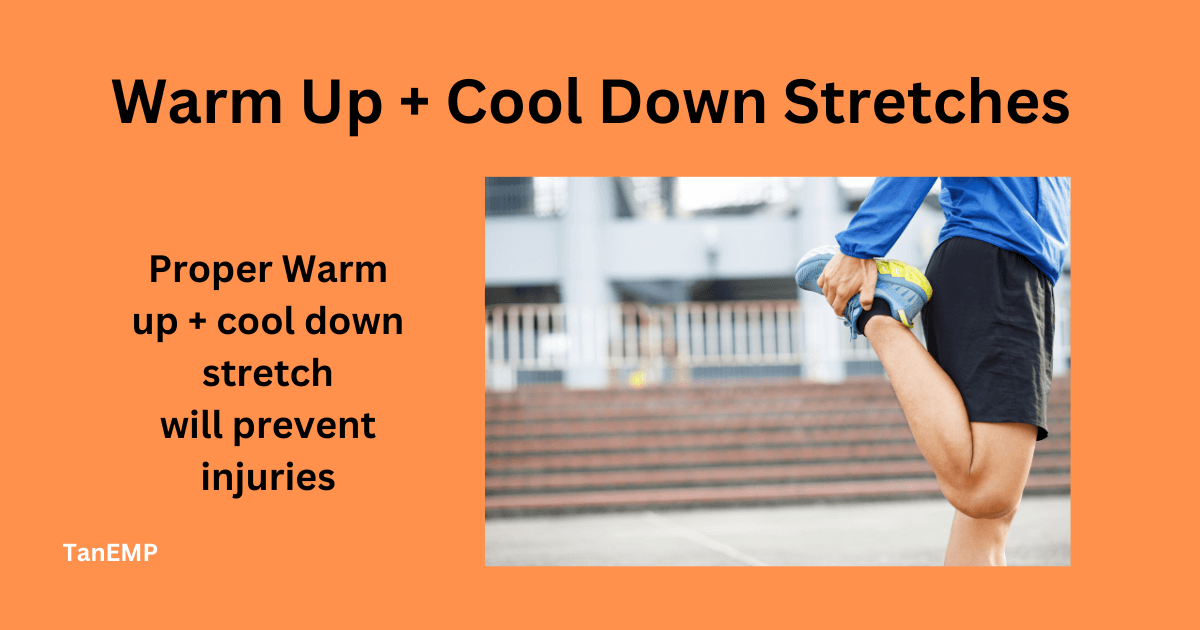
Getting ready before you run and taking time to cool down after are both important parts of running safely.
- Warm-Up
Start with a warm-up to prepare your body. Spend 5-10 minutes doing dynamic stretches like leg swings, high knees, and butt kicks. These moves get your blood flowing, wake up your muscles, and improve your flexibility. - Cool Down
After your run, spend a few minutes walking slowly to let your heart rate return to normal. Then, move on to simple stretches to help prevent tightness. Focus on stretching key muscles like your calves, hamstrings, and quadriceps.
Warming up and cooling down are simple steps that make a big difference. They help prevent injuries and let you feel better after each run!
Staying Motivated: Tips for New Runners
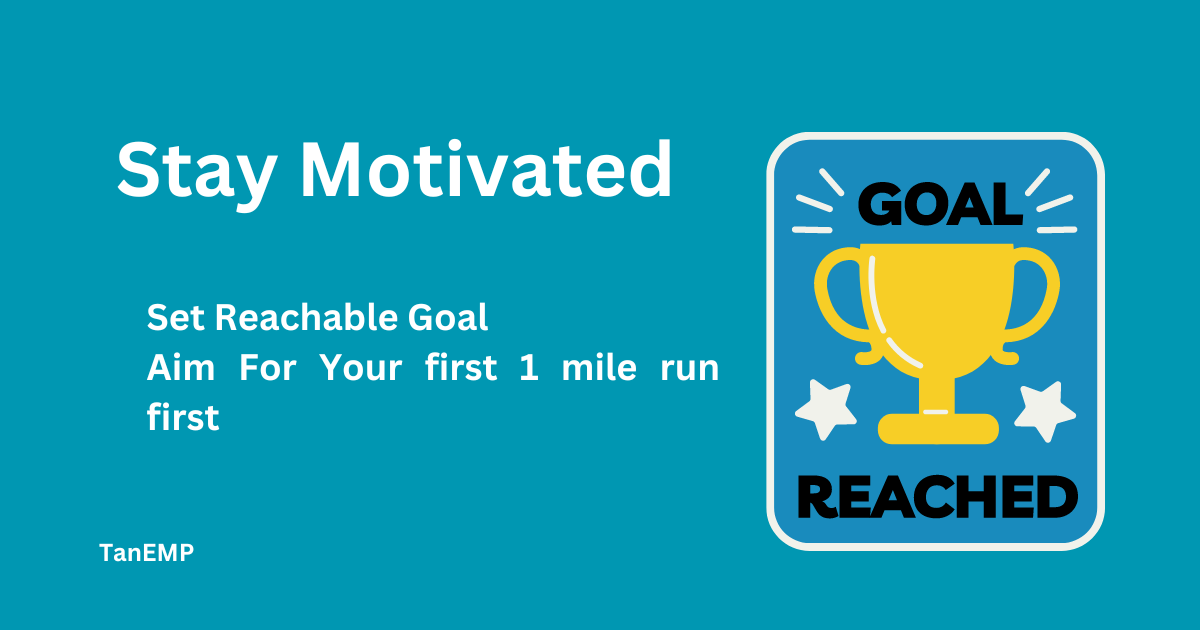
Staying Motivated as a New Runner
Keeping up your motivation as a new runner can be a challenge, but setting small, realistic goals makes a big difference. Here are some tips:
- Set Realistic Goals
Start small! Aim to run a few minutes longer or go a bit farther each week. These small goals add up and help you see progress over time. - Find a Running Buddy
Running with a friend or joining a local running group adds extra motivation and accountability. Having someone by your side can make running more fun and keep you on track. - Change Up Your Routes
Keep things fresh by trying new places to run, like different neighborhoods, parks, or trails. New scenery can help prevent boredom and make running feel like an adventure. - Celebrate Small Wins
Take time to celebrate the little milestones whether it’s your first uninterrupted run or reaching a new distance. Every win counts and reminds you how far you’ve come!
By setting goals, finding a buddy, and mixing up your routine, you’ll find it easier to stay motivated and keep your legs moving week after week!
Avoiding Injuries: Safety Tips for Beginners

Injury prevention is crucial for new runners. Incorporate rest days into your weekly running schedule to allow your body time to recover and adapt.
Listen to your body and recognize warning signs like persistent pain or discomfort. Don’t ignore these signals take a long break between runs if needed.
Try activities like swimming or cycling to stay fit and let your running muscles rest.
Strength training, especially for your lower body and core, can help improve your running technique and reduce injury risk.
Remember, staying injury-free is key to maintaining a consistent running routine.
Nutrition and Hydration for New Runners
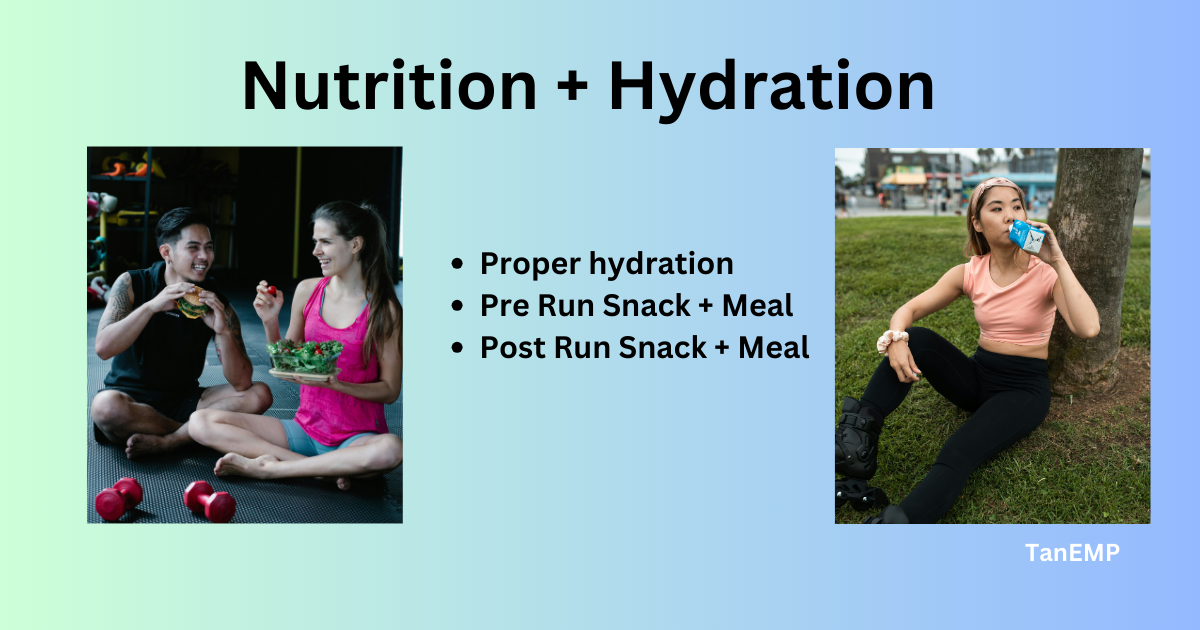
Fueling your body right is key to feeling good and staying strong as a new runner. Here’s how to keep your energy up and recover well:
- Eat a Balanced Diet
Make sure to include foods that give you lasting energy. Try to eat a mix of whole grains (like oats or brown rice), lean proteins (like chicken or beans), and healthy fats (like avocados or nuts) to support your runs. - Stay Hydrated
Drinking water throughout the day is just as important as sipping during your runs. Staying hydrated helps prevent fatigue and keeps you feeling good from start to finish. - For Longer Runs, Try Electrolytes
If you’re running for more than 60 minutes, consider a sports drink to replace lost electrolytes, which can help you feel more energized. - Pre-Run Snack
Before you head out, have a light snack, like a banana or a piece of toast with peanut butter. This gives you a quick boost without weighing you down. - Post-Run Fuel
After your run, eat a mix of carbs and protein to help your muscles recover and get you ready for the next run. A yogurt with fruit or a smoothie with protein is a great choice!
With a few smart choices, you’ll have the fuel and hydration you need to feel your best and keep running strong!
Progressing Your Running Journey
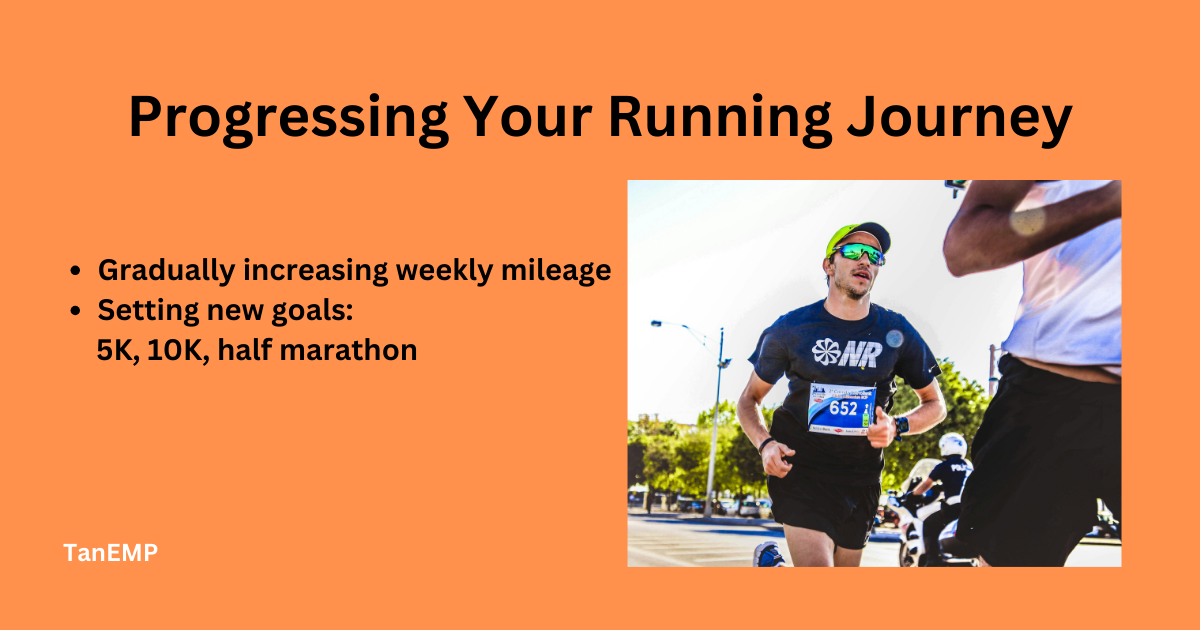
As you get better at running, you might feel ready to do a little more each week. Here’s a guide to increasing your distance safely:
- Add Distance Slowly
Try to increase your weekly mileage by no more than 10% per week. This helps you avoid overtraining and gives your body time to adjust. - Set Realistic Goals
Start with a reachable goal—maybe a 5K. Once that feels easy, aim for something longer, like a 10K or even a half marathon. - Add Variety
After building a strong base, mix things up with speed work or hill sessions. These add challenges to your runs and can help you build strength. - Progress Slowly
Listen to your body and take it easy. Many runners get hurt when they try to add too much distance or intensity too soon. Focus on steady, safe progress rather than rushing.
With patience and consistency, you’ll be ready to take on new goals and go further each week!
Wrap Up
Starting your running journey is a great step toward better health. Every runner began just like you by taking that first step.
Go at your own pace, listen to your body, and celebrate every small win. Whether you’re aiming to get fitter, feel happier, or simply enjoy the thrill of running, just keep moving forward.
So, lace up your shoes and get ready to start your journey as a runner today!
FAQ How To Start Running
1. How should a beginner start running?
Begin with short, easy runs mixed with walking. Try the run-walk method which focuses on doing this regularly rather than worrying about speed or distance. As it feels easier, gradually add more running time.
2. What is the best running schedule for beginners?
Start by running 2-3 times a week with rest days in between. Try alternating between running and walking for 20-30 minutes. Over time, increase the running intervals as you get comfortable.
3. Do I need special running shoes?
Yes, proper running shoes prevent injuries and improve comfort. Visit a specialty store for the right fit.
4. How long should my runs be when starting out?
For most beginners, a 20-30 minute run, including walking breaks, is a good start. Gradually add about 5 minutes per week as you improve.
5. How important is warming up before running?
Yes, warming up is key! It gets your muscles ready and helps prevent injuries. Spend 5-10 minutes on stretches like leg swings or high knees to get your blood flowing.
6. Can I run on a treadmill if I’m just starting?
Absolutely. A treadmill is a great option for beginners. It lets you control your speed, and incline and is perfect for any weather. Plus, it can help you track your progress easily.
